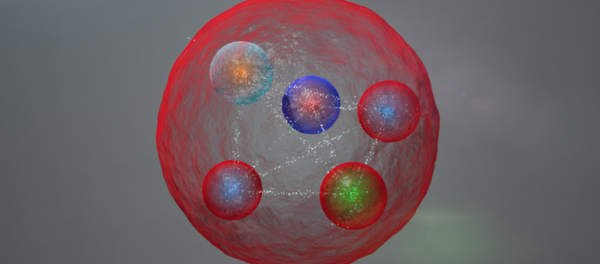Neutrinos are part of the lepton family of particles and come in three 'flavors', what is especially interesting about them is that they can change flavor (oscillate) while in flight, so while a neutrino might begin its journey as a muon neutrino, it can magically morph into a tau neutrino by the time it hits a detector.
"People are ecstatic to see our first observation of neutrino oscillations," NOvA co-spokesperson Peter Shanahan, of Fermi National Accelerator Laboratory, located close to Chicago, Illinois.
The neutrino beam passes through an underground detector which measures its neutrino composition before leaving the site. The laboratory's accelerator sends, once per second, trillions of neutrinos to the detector at Minnesota, where only a few will register.
"For all the people who worked over the course of a decade on the designing, building, commissioning and operating this experiment, it’s beyond gratifying," Shanahan said.
A neutrino makes its presence known at the NOvA detector by colliding with an atom, after which it releases a trail of particles and light. The trail is different depending on whether it is an electron, muon or tau neutrino; the type of neutrino is related to its corresponding charged particle.
Abundant & elusive, oscillating neutrino particles observed today @novaexperiment @Fermilab — http://t.co/2VekHxxrq5 pic.twitter.com/5EUdLePuax
— Argonne National Lab (@argonne) 7 августа 2015
The neutrino beam originating at Fermilab is composed almost entirely of muon neutrinos, and the researchers are able to detect oscillating neutrinos by measuring how many muon neutrinos disappear over their journey and reappear as electron neutrinos. The scientists found that instead of 201 muon neutrinos arriving at the NOvA far detector, only 33 were detected, proof that the oscillation of neutrinos took place.
The Nova collaboration comprises 210 scientists and engineers from 39 institutions in the United States, Brazil, the Czech Republic, Greece, India, Russia and the United Kingdom, and aims to gain greater understanding of the neutrino particle, one of the fundamental particles which make up the universe, but one of the least understood.
ICYMI: NOvA neutrino detector takes shape: http://t.co/EzysjzZFAz pic.twitter.com/CzHs2SXh37
— symmetry magazine (@symmetrymag) 30 июля 2014
Scientists believe neutrinos could hold clues as to why matter overwhelmingly survived after the Big Bang instead of just energy in the form of light.
"If we want to understand the universe on a large scale, we have to understand how neutrinos behave,” explained physicist Thomas Coan, a principal investigator on NOvA.
"Experimental observations from NOvA will be an important input into the overarching theory."
Last month the accelerator at Fermilab set a world record for most powerful high-energy particle beam ever generated for a neutrino experiment, when it generated a sustained 521-kilowatt beam, beating the 400-plus-kilowatt beam sent to neutrino experiments from particle accelerators at CERN, home to the Large Hadron Collider.
The next aim for the accelerator is to deliver 700 kilowatt beam power, and then upgrade to power in excess of 1,000 kilowatts, or 1 megawatt.



